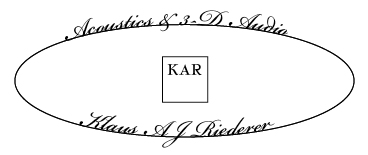|
|
Qualitative measures: HRTF repeatability, variability and idiosyncrasy
Visual evaluation shows effects on HRTFs caused by variations in microphone placement, ear canal and cavum
conchae occlusion, head posture and movements. Due to complex pressure distributions in the human concha, especially the transverse modes above ca.
10 kHz, and the strong head shadowing effect, the fundamental measurement uncertainty (repeatability) becomes poor at high frequencies and in
contralateral directions. In ipsilateral directions, the reflections from the anatomy are more prominent than the diffraction phenomena, and the
between-subject variability (idiosyncrasy) is maximal above ca. 6 kHz due to highly individual concha structure. The degree of idiosyncrasy is further
affected by HRTF measurement distance, head/body posture and the person’s outward appearance, e.g., hair/style, headpieces and clothes.
Their effects follow complex but nevertheless generic principles enabling these (external) attributes to be parametrically modeled.

|



